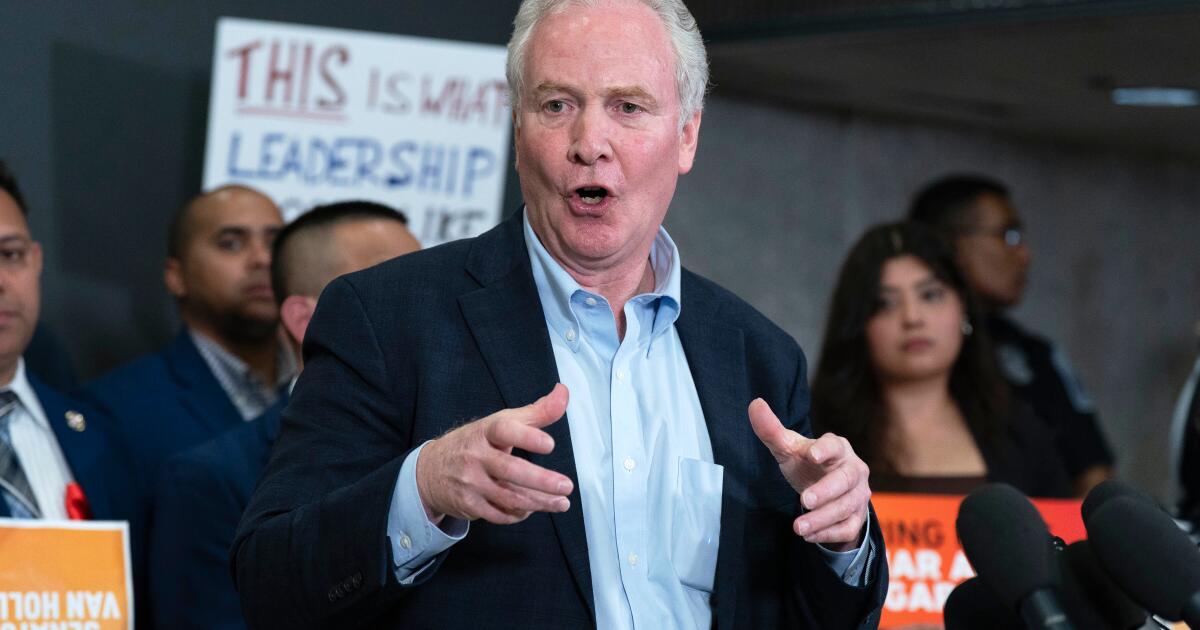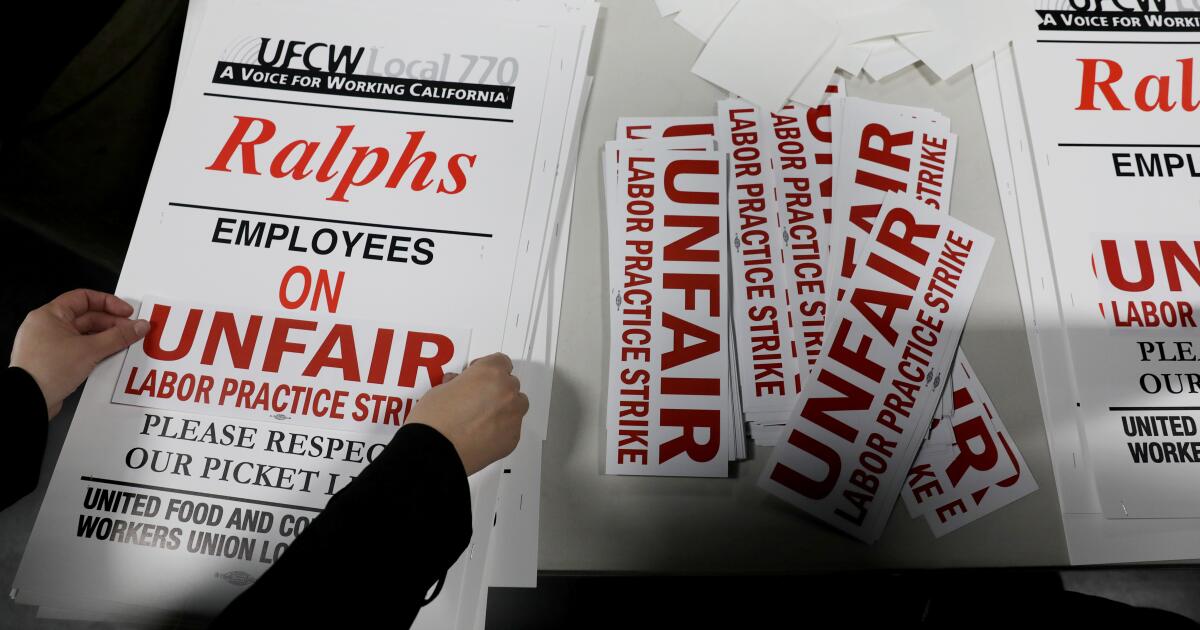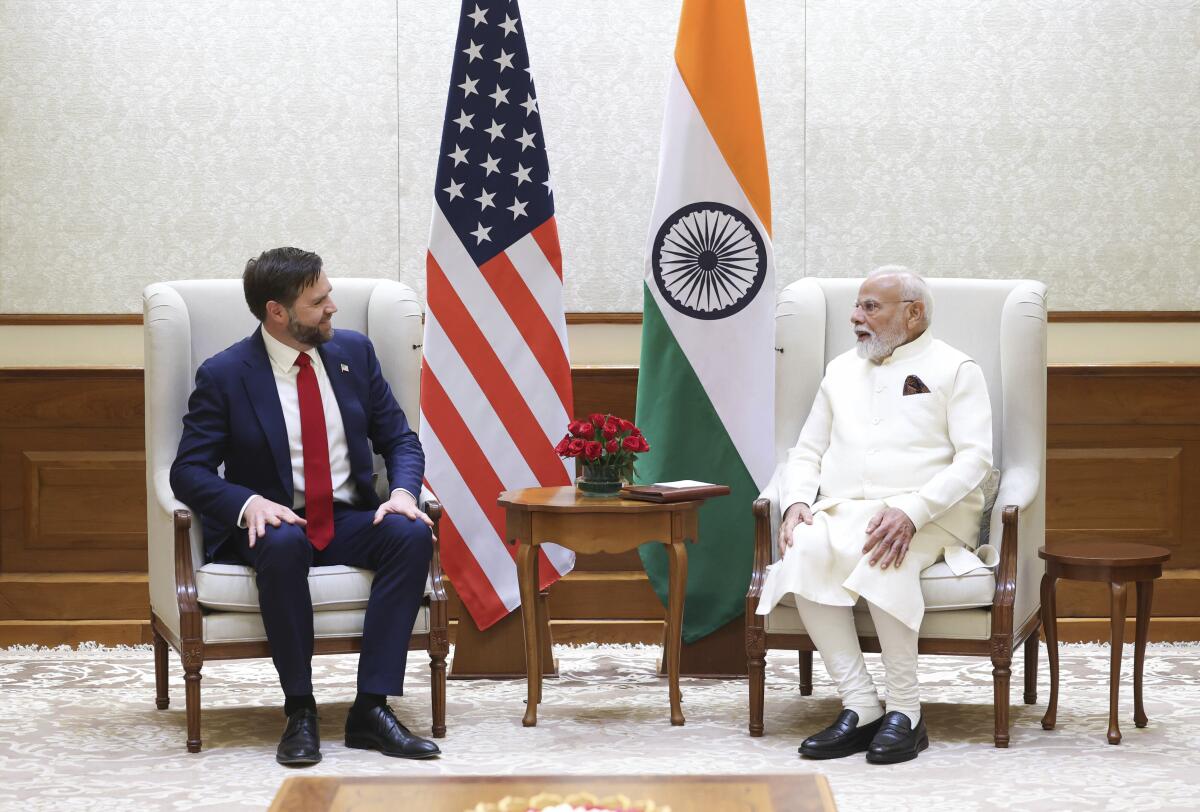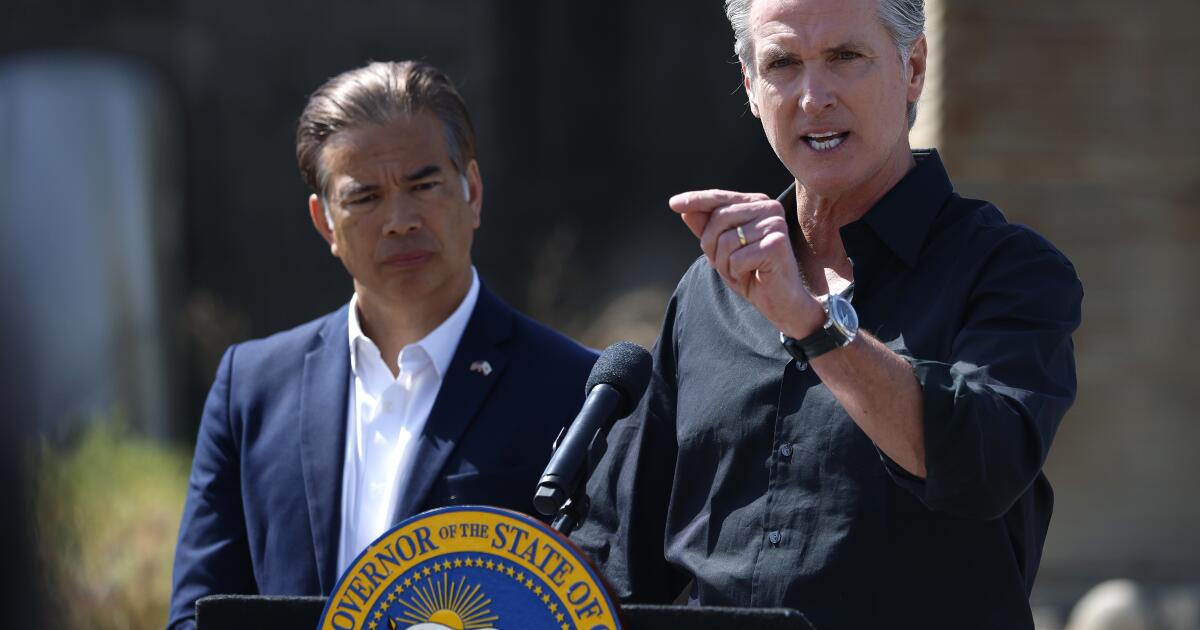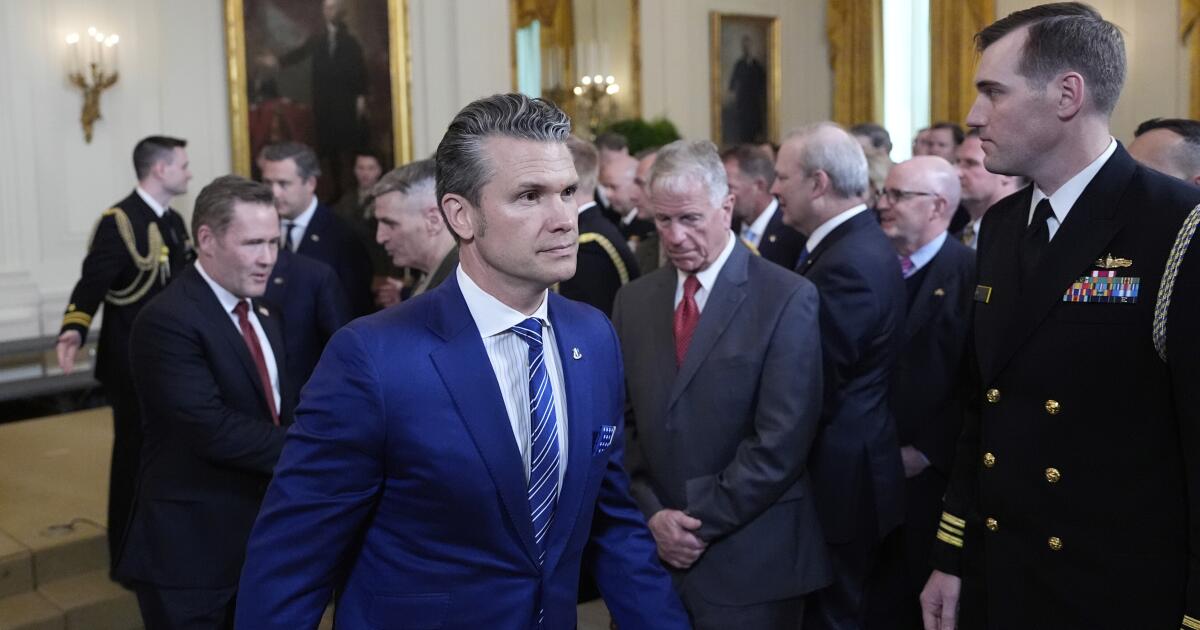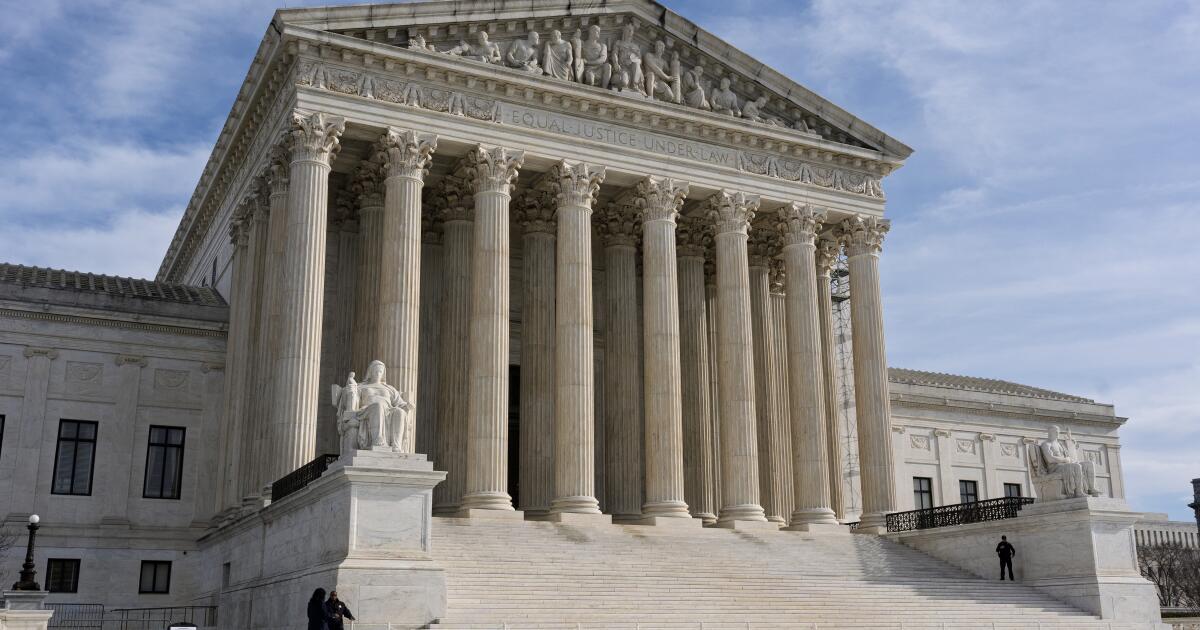Gavin Newsom, Chris Van Hollen and the news cycle no Democrat wanted
Gov. Gavin Newsom made headlines Friday for his comments about wrongfully deported Maryland resident Kilmar Abrego Garcia, when he was trying to make news about tariffs.
Speaking at a Central Valley press conference announcing a lawsuit against the Trump administration over its wildly unpredictable trade policies, Newsom answered a question from reporters about Abrego Garcia. He called the controversy about whether the man is a gang member “the distraction of the day.”
Chaos ensued, including a Dem-on-Dem news cycle over the holiday weekend that neither Newsom nor the Democrats wanted, in which pundits debated whether Abrego Garcia and the due process crisis his extrajudicial deportation represents was indeed a distraction, or a constitutional crisis.
Sen. Chris Van Hollen (D-Md.), who traveled to El Salvador and was able to speak with Abrego Garcia, shot back at Newsom: “I think Americans are tired of elected officials or politicians who are all finger to the wind,” adding that, “anyone who can’t stand up for the Constitution and the right of due process doesn’t deserve to lead.”
Spoiler alert: I am pro-due process, and appalled that our executive branch is arguing for its suspension when it comes to immigrants — because, of course, that is the first step to curtailing everyone’s rights.
Calling Abrego Garcia’s plight a “distraction,” even if only on the narrow issue of gang membership, as Newsom’s office later clarified was his intent, is flat-out wrong. But the seeming split between Newsom and Van Hollen is both smaller than media is playing it, and also the most important question vexing Democrats right now: Do Americans care about the Constitution, or the stock market?
Americans largely can’t make up their minds about what worries them most. A good portion of people are currently zigzagging between terror that their life savings is disappearing before their eyes, and terror that their constitutional rights are in the same trash bin. It’s an all-hands-on-deck moment for Democrats, and there should be space to defend both the rights of Abrego Garcia (and by extension all of us) and push back against a senseless global trade war that threatens to put America into a recession.
But the controversy over Newsom’s inelegant statement goes to the heart of the Democratic divide right now. It’s a party in disarray that can’t decide whether to go all out against the attacks on democracy, or keep laser-focused on the pocketbook issues that seem to have ultimately handed Trump his second term.
Folks, it’s time to walk and chew gum, as the old saying goes.
Abrego Garcia is somewhere in a Salvadoran prison right now.
Maybe not the worst-of-the-worst Terrorism Confinement Center, or CECOT, where he began his deportation nightmare in a facility that human rights watchers contend has a history of torture, but he is still locked up in a Kafkaesque scenario that could leave him with what appears to be a life sentence in a foreign prison without committing a crime or being heard by a judge.
That kind of grab-and-vanish justice is common in El Salvador, where a three-year state of emergency declaration made by an authoritarian leader claiming he’s cracking down on gang crime has suspended due process rights, imprisoning about 83,000 people, according to Amnesty International.
That sounds a bit too close to home as President Trump deports and detains people using that same tough-on-crime talk without evidence, while Vice President JD Vance argues online that due process is just too cumbersome and needs to be scrapped for convenience if the United States is to be successful, as Trump has promised, at deporting millions of people in the next few years, whether they are criminals or not.
“To say the administration must observe ‘due process’ is to beg the question: what process is due is a function of our resources, the public interest, the status of the accused, the proposed punishment, and so many other factors,” Vance wrote on social media last week. “Here’s a useful test: ask the people weeping over the lack of due process what precisely they propose for dealing with Biden’s millions and millions of illegals. And with reasonable resource and administrative judge constraints, does their solution allow us to deport at least a few million people per year?”
Yikes. Expediency over law.
“No process is the new due process,” Adam Winkler, a UCLA professor who teaches constitutional law, told me. “The Constitution is clear that any person in the United States in entitled to due process, it doesn’t matter if they are an immigrant.”
Newsom, in a more thoughtful interview with podcaster Bryan Tyler Cohen last week, called such flagrant disrepect for the law “the other side of the red line.”
“The founding fathers did not live and die for this moment,” Newsom said. “And so if you want this democracy, this democratic republic, to survive, that has to be called out with clarity and conviction, period, full stop.”
So Newsom and Van Hollen don’t disagree on the significance of Abrego Garcia’s case after all. They just can’t agree on how to best reach voters.
Most Americans don’t really know what due process is, or what losing it will mean to democracy. They do, however, understand when gas and groceries cost more, and when their retirement savings are sinking like a brick in a river.
As former Republican political consultant Mike Madrid put it, yes, we need to walk and chew gum, “but let’s not pretend that they’re equal, because they’re not.”
Walking, being the economy in this analogy, is far more important, he said.
In a recent poll, 55% of voters said they disapprove of the way Trump is handling the economy. Another poll by CNBC found Trump’s ratings on economic performance are currently the lowest they’ve ever been in his political career, after winning the election on economic issues.
“The fact that Democrats aren’t driving a tank through that issue is malpractice,” Madrid said, and he’s right. The economy won Trump the election, and the economy could lose Republicans the next one.
Fighting for the rights of Abrego Garcia?
“It’s a tough case, because people are really — are they defending MS-13? Are they defending, you know, someone who’s out of sight, out of mind in El Salvador?” Newsom said at the Friday news conference. “It’s exactly the debate [Republicans] want, because they don’t want this debate on the tariffs.”
But here’s where Trump’s chaos theory becomes so effective. Those who care about democracy have to fight on both the economy and due process — and so much more — because we may not make it to another free and fair election (as the last one was) if we allow the executive branch unlimited power. And, it should go without saying, there is a moral imperative to not abandon Abrego Garcia, or any of these people deported without due process.
Democrats seem to be stuck in a political mindset — how do they win elections — when the moment calls for something greater.
The ability to walk and chew gum, and explain to voters why both matter.
